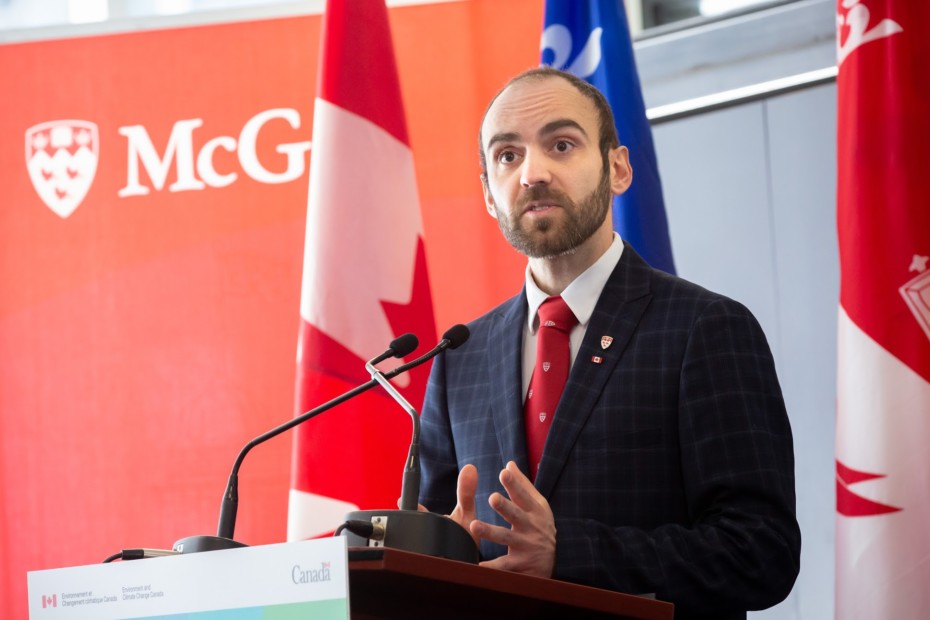
Optimizing the environmental performance of McGill’s buildings is a key element of McGill’s Vision 2020 Climate and Sustainability Action Plan 2017-2020. It was also identified as the top priority for the McGill community in a recent survey aimed at informing the 2020-2025 strategy. Since energy use in McGill’s buildings accounts for roughly two thirds of the University’s greenhouse gas (GHG) emissions, an effective energy management plan is essential in helping McGill achieve its goal of achieving carbon neutrality by 2040.
We spoke with Jérôme Conraud, Director, Utilities and Energy Management, to discuss the progress the University has made so far in reducing its building-related GHG emissions and what actions are planned next.
McGill put in place a number of initiatives in the past decade to reduce energy use in our buildings. How effective have these measures been?
We have already managed to reduce our building-related GHG emissions by 34 per cent, compared to 2002-2003, which is a good first step. This was achieved through incremental steps such as a live online monitoring of the energy consumed in 70 buildings, the construction of a new heating plant and replacement of the heat distribution network at Macdonald Campus – which led to a reduction of building-related GHG emissions at Mac of 41 per cent – and retrofitting of equipment.
For example, we recently replaced outdated heating, ventilation and air-conditioning (HVAC) systems in several buildings. We have very stringent energy-efficiency requirements when we renovate a building, on par with LEED (Leadership in Energy and Environmental Design) standards.
In addition to the measures aimed at reducing energy use, you are also implementing ways for the University to ‘reuse’ energy. How does that work?
Yes, in the past couple of years, we have started deploying energy recovery loops on the downtown campus, what we call ‘smart energy grids’. These loops consist of using the excess heat normally lost through air exhausts or generated by electrical or mechanical equipment, for example, to heat or cool other rooms or other buildings.
We started with a pilot project a few years ago where we connected Burnside Hall to the new HVAC system in the Otto Maass Building. The heat generated by the data centre in Burnside Hall now supports 20 to 25 per cent of the heating needs of Otto Maass. We are now creating similar loops on most of the downtown campus. This involves adding, modifying and replacing HVAC equipment and components, such as chillers, heat pumps and pipes. These energy recovery loops will help us reduce our natural gas consumption even further.
Last year, McGill received funding from the federal government to support the replacement of heating equipment and distribution systems. What exactly is planned?
The $1.8 million McGill received out of Canada’s Low Carbon Economy Fund will be allocated to the replacement of one of our three boilers in the downtown campus powerhouse. Most buildings on the downtown campus are heated with steam that flows out of the powerhouse through a network of tunnels and that is produced by boilers powered by natural gas. McGill’s natural gas consumption accounts for 80 per cent of all GHG emissions generated by our buildings. By replacing one of the boilers with an electric one, we will reduce the emissions from our downtown powerhouse by one third, so it’s a major transformative project for the campus.
The project also includes the installation of equipment to recover and reuse the heat lost through combustion gases from the remaining natural gas-powered boilers, just like we are doing with our ‘smart energy grids’ elsewhere on campus. We expect both these projects to be completed in time for the 2021-2022 heating season.
Finally, another short-term project the federal government grant will support is the conversion from heating oil to electricity for all of the heating needs at the Gault Nature Reserve.
Will these changes lead to reduced energy costs?
Not right away. In the short term, when we start using the electric boiler during peak-demand hours, it will be more expensive than using a natural-gas boiler, as electricity rates are higher during those hours. If we were using it today, for example, our heating costs would be 25 per cent higher. That’s $1 million more per year. But in the long term, say 25 years, if you take into account forecasts on how the carbon tax is likely to increase and affect the cost of using natural gas, the upfront costs will eventually be offset by savings for the University, compared to our current operational costs.
Similarly, the replacement of HVAC systems in our buildings is expensive and, yes, disruptive to the occupants, but these new systems are more efficient and will go a long way in helping us reduce our GHG emissions. And of course, these upgrades offer better support for our research facilities and more comfortable spaces for our students, faculty and staff.
